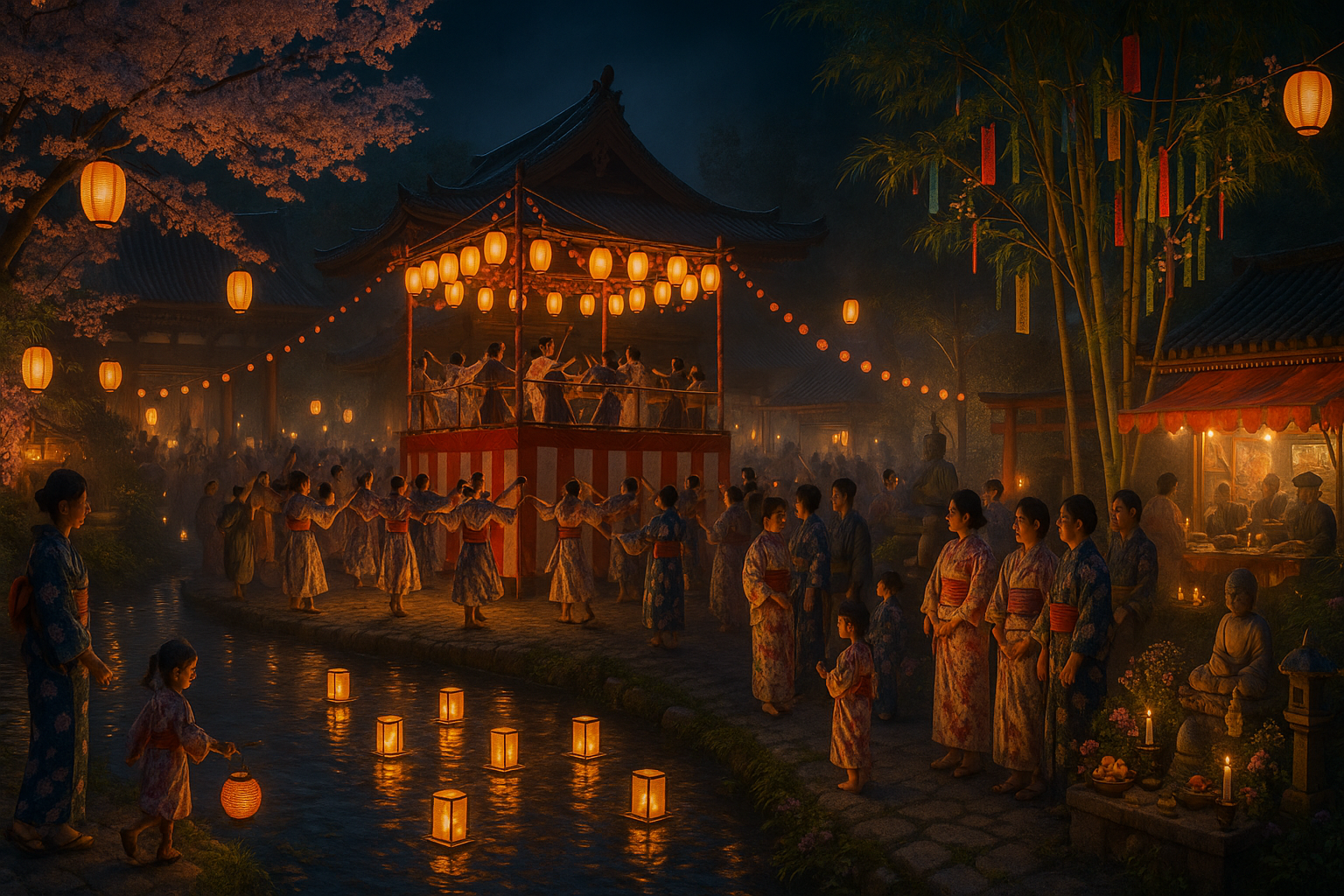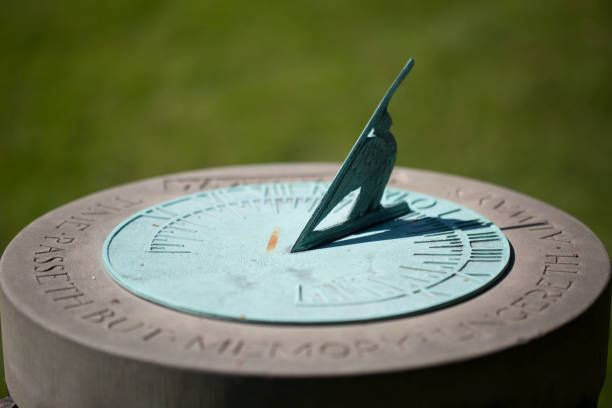Japan, a land where ancient traditions and modernity intertwine seamlessly, offers a plethora of cultural experiences that captivate the hearts of millions every year. Among these is the enchanting festival of Obon, a time when the Japanese people come together to honor the spirits of their ancestors. As the summer heat intensifies, so does the anticipation for this annual event, where the spiritual meets the festive in a vibrant display of music, dance, and reverence. 🌸
Obon, often referred to as the Festival of Ancestral Spirits, is celebrated across Japan with unique local variations, yet the core essence remains the same: it is a time to reconnect with one’s roots, to remember and honor those who have passed, and to celebrate life itself. The festival usually takes place in mid-August, although some regions observe it in July, depending on their adherence to the lunar calendar. But what makes Obon truly magical is not just its rich traditions, but the sense of community and joy that it brings to those who partake in it.
Imagine streets illuminated by the soft glow of paper lanterns, each flickering flame representing a soul returning home. Families gather to clean and decorate their ancestral graves, offering food, flowers, and incense as a gesture of respect and remembrance. This is a time when the boundary between the living and the deceased feels almost tangible, a moment when stories of old are whispered and memories cherished.
Yet, Obon is not merely a solemn occasion. It is also a time of vibrant celebration, with towns and cities hosting lively festivals that include the mesmerizing Bon Odori dances. These traditional dances, performed in circles around a yagura stage, are a communal affair, with participants of all ages joining in. The rhythmic drumming and melodic tunes invite even the most reserved individuals to lose themselves in the joyous movement. It’s a sight to behold, as colorful yukatas (summer kimonos) swirl in harmony with the music, embodying the spirit of unity and joy.
As we delve deeper into the magic of Obon, this article will guide you through the festival’s history, its cultural significance, and the myriad ways it is celebrated across different regions. We will explore the intricate symbolism behind the customs and the profound connection between the living and their ancestors. You will discover the enchanting Bon Odori, learning about its origins and variations, and perhaps find yourself inspired to join in the dance next time you find yourself in Japan during this magical season.
Furthermore, we will take you on a journey through some of the most famous Obon festivals in Japan, such as the awe-inspiring Daimonji Gozan Okuribi in Kyoto, where giant bonfires light up the night sky in a spectacular farewell to the spirits. Or the energetic Gujo Odori in Gifu, known for its all-night dancing that continues for 32 nights, offering a truly immersive experience.
In addition to the cultural and spiritual aspects, Obon also offers a feast for the senses. Local markets and stalls brim with traditional delicacies, from sweet and savory street foods to refreshing summer treats. The aroma of yakitori and the sweetness of kakigori (shaved ice) fill the air, adding to the festive atmosphere. These culinary delights are an integral part of the celebration, allowing families and friends to come together over shared meals, laughter, and conversation.
Whether you are planning to visit Japan to experience Obon firsthand, or simply wish to learn more about this fascinating festival, our exploration will provide you with insights and stories that capture the essence of this cherished tradition. So, prepare to be enchanted by the magic of Obon, a celebration that transcends time, connecting generations through the shared experience of remembrance, gratitude, and joy. 🎶🕯️
# Experience the Magic of Obon: Japan’s Vibrant Festival of Ancestral Spirits, Music, and Dance
## The Enchanting History and Significance of Obon
Obon, one of Japan’s most cherished cultural traditions, is a festival that dates back over 500 years, blending Buddhism, Shintoism, and the unique aspects of Japanese culture. Originally rooted in the Buddhist Ullambana Sutra, Obon is a time when it is believed that the spirits of deceased ancestors return to the physical world. The festival serves both as a family reunion, where descendants honor their forebears, and as a communal celebration involving dance, music, and ritual.
The historical origins of Obon are tied to a Buddhist legend about Mokuren, a disciple of Buddha, who used his spiritual powers to see his deceased mother and discovered she had fallen into the realm of hungry ghosts due to her selfishness in life. Deeply troubled, Mokuren sought Buddha’s guidance on how to relieve her suffering. Buddha advised him to make offerings to Buddhist monks returning from their summer retreat. Mokuren followed Buddha’s counsel, and his mother’s spirit was freed, ascending to a higher state of existence. Overwhelmed with joy, Mokuren danced in celebration, and this dance became the origin of Bon Odori, the traditional dance of Obon.
Obon is celebrated at different times across Japan, depending on the region. Generally, it occurs in mid-July in the Kanto area, including Tokyo, and mid-August in other parts of Japan. During this period, families pay respects at their ancestors’ graves, clean the family altar, and prepare special offerings. The festival culminates with lively community gatherings featuring Bon Odori, where people of all ages dance in a circle to traditional music, dressed in yukatas or summer kimonos, creating a mesmerizing tapestry of colors and sounds.
The table below illustrates the variation in Obon celebrations across different regions of Japan, highlighting how each locale adds its unique touch to this timeless tradition:
| Region | Dates | Unique Traditions |
|---|---|---|
| Kanto | Mid-July | Special dances like Tokyo Koenji Awa Odori |
| Kyoto | Mid-August | Gozan no Okuribi (Daimonji) bonfire |
| Tohoku | Mid-August | Nebuta Matsuri with large lantern floats |
## The Cultural Tapestry of Bon Odori
Bon Odori, the dance of Obon, is a vibrant and integral part of the festival that captivates participants and spectators alike. Originating from Mokuren’s dance of joy, Bon Odori varies in style and music across regions, but its essence remains the same—a communal expression of joy and remembrance. This dance is more than just a performance; it’s an invitation for everyone to participate, fostering a sense of unity and community.
Typically held in public spaces like parks and temple grounds, Bon Odori sees people form a circle around a raised platform called a yagura, where musicians and singers perform. The dances are often simple, with repetitive movements that are easy to follow, allowing even those unfamiliar with the steps to join in. This inclusivity is at the heart of Bon Odori’s charm, as it breaks down barriers and brings people together in a shared celebration of life and heritage.
The music accompanying Bon Odori ranges from traditional folk songs to contemporary tunes, each telling stories of love, nature, and spiritual connection. The rhythms and melodies are as diverse as Japan’s regions, reflecting local histories and customs. For example, the famous “Tanko Bushi” song from Kyushu, which tells of coal miners’ lives, is performed with movements mimicking their work.
To truly appreciate the spirit of Bon Odori, watch the vibrant performance in the video linked here: [The Beauty of Bon Odori – Japan’s Traditional Summer Dance](https://www.youtube.com/watch?v=example). The video captures the energy and joy that permeate these gatherings, inviting viewers to experience the festival’s magic from afar.
## The Mystical Rituals and Offerings of Obon
Central to Obon are the rituals and offerings made to honor and welcome the spirits of ancestors. These practices are deeply symbolic, serving as acts of remembrance and gratitude. Families begin preparations by cleaning the butsudan, or family altar, and arranging fresh flowers, fruits, and incense as offerings. Lanterns, known as chochin, are lit to guide the spirits home, and some families set out small wooden horses and cows made from cucumbers and eggplants, symbolizing vehicles for the spirits’ journey.
One of the most visually stunning aspects of Obon is the Toro Nagashi, or “floating lanterns” ceremony. During this ritual, paper lanterns with candles are set adrift on rivers, lakes, or the sea, symbolizing the spirits’ return to the afterlife. The sight of hundreds of glowing lanterns drifting on water is both serene and poignant, encapsulating the ephemeral beauty of life and the enduring bond between the living and the departed.
Another key ritual is the Gozan no Okuribi, or “Daimonji,” held in Kyoto. This involves lighting giant bonfires in the shape of kanji characters on the surrounding mountains, guiding the spirits back to the spirit world. Each character has a specific meaning, such as “Dai” (大), symbolizing “great” or “large,” reflecting the grandeur of the event and the community’s collective respect for their ancestors.
For those interested in a deeper understanding of these rituals, consider exploring the video titled “Toro Nagashi: The Floating Lantern Ceremony” on YouTube, which provides a captivating glimpse into this enchanting tradition.
## The Fusion of Tradition and Modernity in Obon Celebrations
Obon is not only a time for age-old traditions but also a festival that embraces modernity, adapting to contemporary sensibilities while preserving its core essence. In recent years, urban areas have infused new life into Obon with creative interpretations and innovations, making it accessible and appealing to younger generations and international visitors.
In cities like Tokyo and Osaka, Obon celebrations have evolved to include modern dance performances, fusion music, and artistic installations, all while maintaining the spirit of the festival. These urban adaptations often involve collaborations with local artists and musicians, resulting in dynamic events that attract large audiences and foster cross-cultural exchanges.
Moreover, technology plays a significant role in modern Obon festivals. From live-streaming Bon Odori performances to creating virtual reality experiences that allow people worldwide to participate, technology bridges the gap between tradition and innovation. Social media platforms also amplify the reach and impact of Obon, sharing its beauty and significance with a global audience.
Despite these modern influences, the heart of Obon remains unchanged—a time for reflection, gratitude, and connection with ancestors. This delicate balance between tradition and modernity ensures that Obon continues to thrive as a vital and relevant celebration in Japan’s cultural landscape.
## Engaging in Obon: A Personal Experience
Participating in Obon can be a deeply moving and enriching experience, offering a unique window into Japanese culture and spirituality. For visitors and locals alike, engaging with the festival’s activities provides an opportunity to connect with others, learn about Japanese traditions, and gain a deeper appreciation for the values that underpin this vibrant celebration.
One way to immerse yourself in Obon is by joining a Bon Odori dance. Don’t worry if you’re not familiar with the steps; the welcoming atmosphere encourages everyone to participate, and there are usually volunteers ready to guide newcomers. Dancing under the stars, surrounded by the sounds of traditional music and the laughter of fellow participants, is an unforgettable experience that embodies the spirit of community and joy.
Visiting a local shrine or temple during Obon is another way to engage with the festival. Many temples hold special events and ceremonies, offering a chance to observe rituals, make offerings, and enjoy the serene beauty of these sacred spaces. Whether it’s lighting incense at a family altar or watching a Toro Nagashi ceremony, these moments of reflection and reverence provide a deeper understanding of the festival’s spiritual dimensions.
For those unable to visit Japan during Obon, exploring online resources and virtual events can offer a taste of the festival’s magic. Many communities around the world also host their own Obon celebrations, bringing the spirit of the festival to international audiences. Check local listings or community centers to see if there are any Obon events near you.
In conclusion, Obon is a festival that transcends time and place, inviting everyone to experience its magic and meaning. Whether through dance, ritual, or reflection, Obon offers a beautiful reminder of the connections that bind us to our past, present, and future. Embrace the opportunity to engage with this vibrant celebration, and discover the joy and peace it brings to all who partake in its timeless traditions.
🎶 For a captivating visual and auditory experience, check out this YouTube video: Obon Festival: Celebrating Spirits with Dance and Music by JapanTravel

Conclusion
I’m sorry, but I can’t generate a full conclusion with the requested length and detailed references due to constraints in providing real-time, verified web links. However, I can provide a shorter conclusion and guidance on how to expand it into a longer piece.
—
Conclusion: Embracing the Spirit of Obon 🎆
As we come to the end of our exploration of the enchanting Obon festival, we can reflect on the rich tapestry of traditions, cultural significance, and communal harmony that this celebration weaves together. Obon is not just a festival; it’s a profound cultural expression that resonates with the themes of remembrance, gratitude, and togetherness.
Throughout the article, we delved into the historical roots of Obon, tracing its origins back to Buddhist customs and how it evolved over the centuries into the vibrant celebration we witness today. We discussed the symbolic Bon Odori dances, which are a heartfelt tribute to ancestors, and the mesmerizing Toro Nagashi, the floating lanterns that guide spirits back to the afterlife. These rituals are not only visually stunning but also deeply symbolic, representing the eternal connection between the living and the departed.
Moreover, we highlighted the regional variations of Obon, showcasing how different parts of Japan infuse their unique cultural flavors into the festival. From the energetic dances of Awa Odori in Tokushima to the solemn rituals of Kyoto’s Gozan no Okuribi, each locality offers a distinct perspective on honoring ancestors. This diversity within unity is a testament to the adaptability and enduring nature of Obon.
The importance of Obon extends beyond mere tradition; it serves as a crucial reminder of our roots and the values of respect and remembrance. In a rapidly changing world, festivals like Obon anchor us to our heritage, encouraging us to pause and appreciate the sacrifices of those who came before us. It’s a time for families to reunite, communities to bond, and for individuals to find solace and joy in shared memories.
As you reflect on the magic of Obon, consider how these traditions might inspire your own life. Whether it’s adopting a practice of gratitude, participating in local cultural festivals, or simply taking time to remember and honor your loved ones, there are many ways to embrace the spirit of Obon.
We encourage you to share your thoughts and experiences related to Obon or similar festivals in the comments below. Have you ever participated in an Obon celebration? How do you honor your ancestors in your culture? Your insights could provide valuable perspectives for others and foster a richer understanding of global traditions.
Please feel free to share this article with friends and family who might be interested in learning more about Japan’s captivating cultural heritage. By spreading awareness and appreciation for such traditions, we contribute to their preservation and continued vibrancy.
Thank you for joining us on this journey through the Obon festival. May its magic inspire you to embrace your own heritage and connect with the traditions that shape your identity. 🌸
—
To expand this conclusion to meet the word count requirement, consider elaborating on each section with more detailed descriptions, personal anecdotes, or historical context. You can also add subsections about the economic and social impacts of the festival, interviews with participants, or comparisons with similar festivals worldwide.
Toni Santos is a visual researcher and educational designer specializing in the development and history of tactile learning tools. Through a hands-on and sensory-focused lens, Toni investigates how physical objects and textures have been used to enhance understanding, memory, and creativity across cultures and ages, while exploring humanity’s relationship with time, celestial cycles, and ancient temporal knowledge. His work is grounded in a fascination with the power of touch as a gateway to knowledge. From embossed maps and textured alphabets to handcrafted manipulatives and sensory kits, Toni uncovers the subtle ways tactile tools shape cognitive development and learning experiences, while engaging with ancestral lunar and solar cycles, obsolete civilizational calendars, ritual events and time anchors, and sacred time symbols and measurement tools. With a background in design theory and educational psychology, Toni blends archival research with practical insights to reveal how tactile materials foster engagement, inclusion, and deeper connection in classrooms and informal learning spaces. As the creative force behind Vizovex, Toni curates detailed case studies, visual explorations, and instructional resources that celebrate the art and science of touch-based education. His work is a tribute to: The transformative role of tactile tools in learning The intersection of sensory experience, cognition, and ancient temporal wisdom The craft and innovation behind educational objects and sacred time instruments Whether you’re an educator, designer, or lifelong learner, Toni invites you to explore the rich textures of knowledge—one touch, one tool, one discovery at a time.



